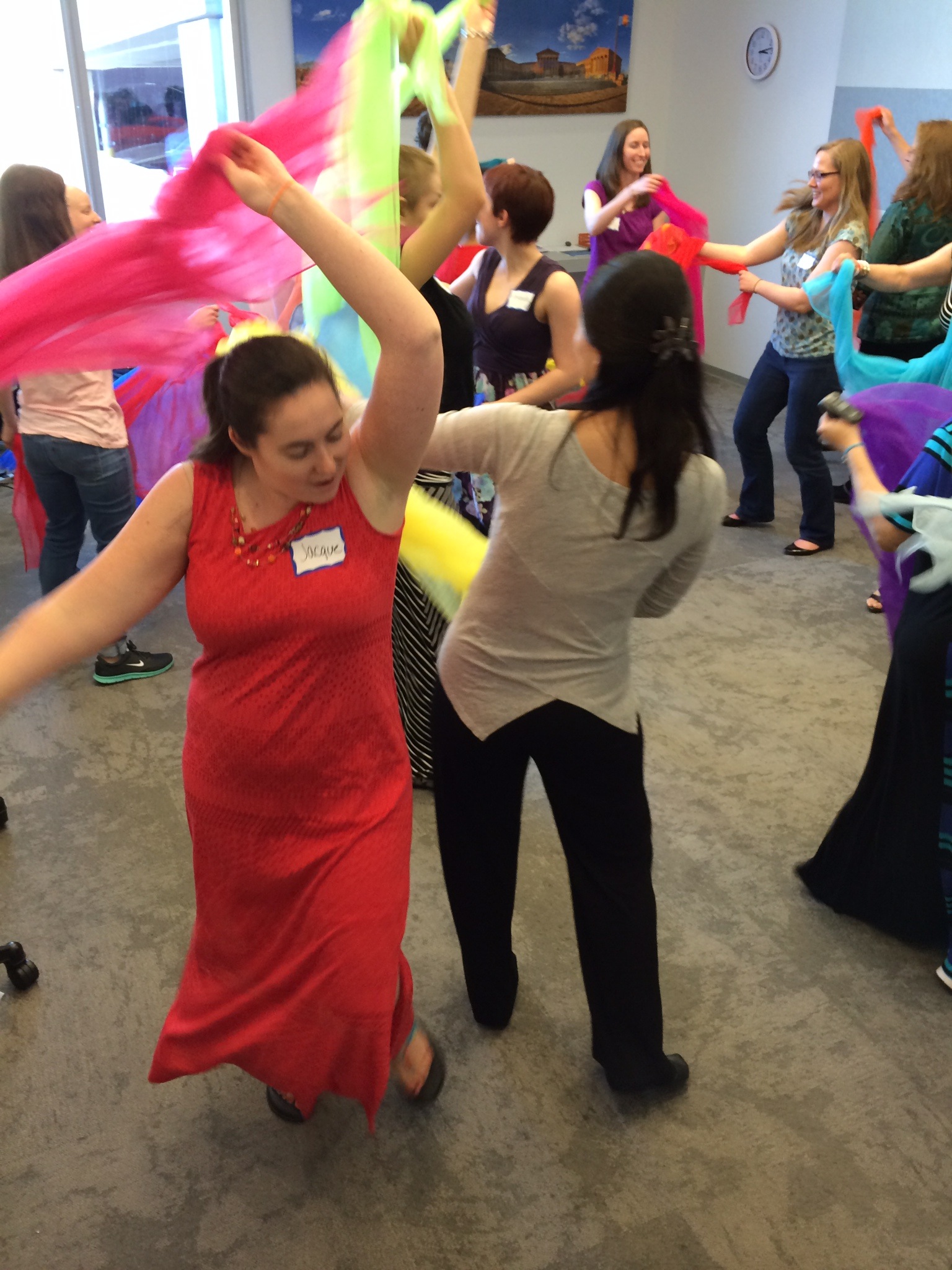Anne Margrethe Melsom, Director of the Creative Arts Therapy Department at Drexel University, and Minjung Shim, a PhD Candidate in Creative Arts Therapies also at Drexel, led this wonderful workshop that was both emotionally and physically moving. Modeled after Marion Rosen’s book, Dance Like Nobody’s Watching, this session explored how dance might promote a positive mind-body relationship for young adults traveling the cancer journey.
The session began with a conversation led by Anne. She disclosed that she was diagnosed with Hodgkin’s lymphoma when she was a professional dancer in the early 1990s. For her, dance provided a method of non-verbal expression; the quiet movement allowed her to cope in moments when words simply wouldn’t suffice. Similarly, Min described dance as a type of “symbolic action.” She explained that, with each movement, you can actively respond to situations that you otherwise cannot control; for example, a strong gesture with the leg might symbolize a “kicking away” of the cancer.

After discussing the therapeutic role of dance, Anne and Min invited everyone out of their seats and into a circle. With the shades drawn and the music on, each person began moving in their own way; they began to dance like nobody is watching! There was no choreography, only personal expression. The initial easy tempo was softly inviting, and each consecutive song was more and more upbeat. Indeed, as the tempo picked up, so did the fun! The circle began to collapse as the dancers moved inward, approaching one another and interacting through movement.
Anne and Min provided colored scarves, adding to the aesthetic of dance and encouraging free form. The room was bursting with pigment, expression, and positive emotion. To cool down from the excitement, the dancers recreated the original circle, and Anne invited any individual to enter the middle and be fanned by the scarves of their peers—to be symbolically fanned by group love and understanding.
In the next section of the session, Min explained the concept of narrative movement. She encouraged each person to demonstrate their past, present, and future without words, against a backdrop of lyric-less music. Perhaps most importantly, she encouraged the group not to just watch, but rather to truly witness one another’s personal journey. A few people presented their narrative movement to the group, explaining verbally the non-verbal mode of expression.
To culminate the session, everyone came together to construct a group sculpture consisting of their “future pose”—the pose they had just deemed representative of the future. This form of still art was alive, not only with a pulse, but also with hope; everyone was connected both spiritually and physically; tears were shed, hands were held, and hearts were opened. The group was able to be together without necessarily talking; the group was able to experience a closeness of space, and therefore, a closeness of soul. The extraordinary courage in the room certainly emerged, and this final non-verbal expression truly epitomized the entire session: dance is therapeutic precisely because it does not demand words.













